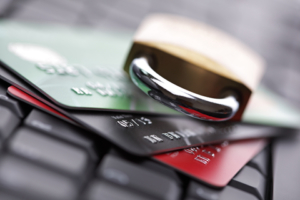Credit Card vs. Debit Card Fraud
One difference between a credit card and a debit card is that if there’s an unauthorized charge on your credit card, you just get a little sting. It’s a hassle to straighten out. But no money is taken from you.
 But if someone gets ahold of your debit card information, the second they use it, depending on the nature of the transaction, your bank account will be drained. And in some cases, you can kiss that money goodbye; you got scorched. More than ever, crooks are using others’ debit card data and sucking dry their bank accounts via ATMs—in an instant.
But if someone gets ahold of your debit card information, the second they use it, depending on the nature of the transaction, your bank account will be drained. And in some cases, you can kiss that money goodbye; you got scorched. More than ever, crooks are using others’ debit card data and sucking dry their bank accounts via ATMs—in an instant.
An article on blogs.wsj.com outlines the differences between a credit card and a debit card:
- Federal law protects you from unauthorized charges made with your credit card number rather than with the actual card.
- In the event the credit card is in a thief’s hands, you’ll be liable, but only for a maximum of $50, provided you report the problem to the credit card company. However, in many cases a “zero liability” policy may kick in.
- Debit cards fall under a different federal law than credit cards. Regulation E, the Electronic Fund Transfer Act, says after two days, you could be liable for up to $50. After 2 days liability jumps to 500.00. Beyond 60 days, you could be liable for all unauthorized transactions. Otherwise, federal rules are on the bank’s side.
- Beyond 60 days, there’s likelihood you’ll never see your money again.
How does the thief get one’s card information in the first place?
- The thief places a “skimmer” in the swiping device of an ATM or other location such as a gas pump or even the swiping device at a checkout counter. The skimmer snatches card data when the card is swiped.
- The thief returns at some point and retrieves the skimmer, then makes a fake card.
- Thieves may capture PINs with hidden cameras focused on the ATMs keys. So when entering PINs, conceal the activity with your free hand.
- A business employee, to whom you give your card to purchase something, may be the thief. He disappears from your sight with your card to swipe it at some unseen location. While away from you, he skims the data.
- The thief sends out mass e-mails designed to look like they’re from the recipient’s bank, the IRS or retailers. The message lures the recipient into clicking a link inside the e-mail.
- The link takes them to a site set up by the thief, further luring the victim into typing in their card’s information.
- The thief calls the victim, pretending to be the IRS or some big outfit, and lures the recipient into giving out card information.
It’s obvious, then, there are many things that can go wrong. Your best solution is to pay close attention to your statements, online or via a mobile app, frequently.
Robert Siciliano is an identity theft expert to BestIDTheftCompanys.com discussing identity theft prevention


























